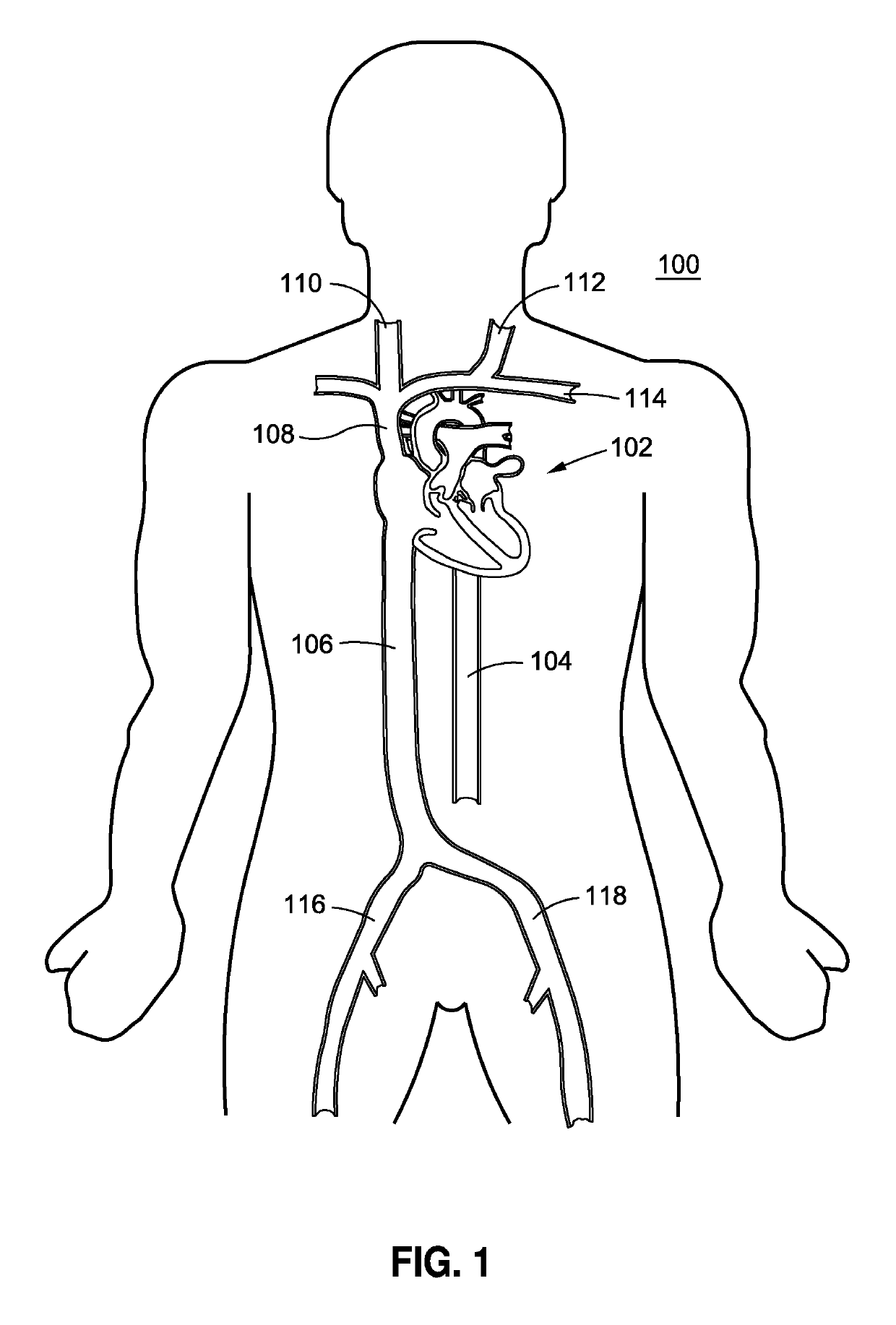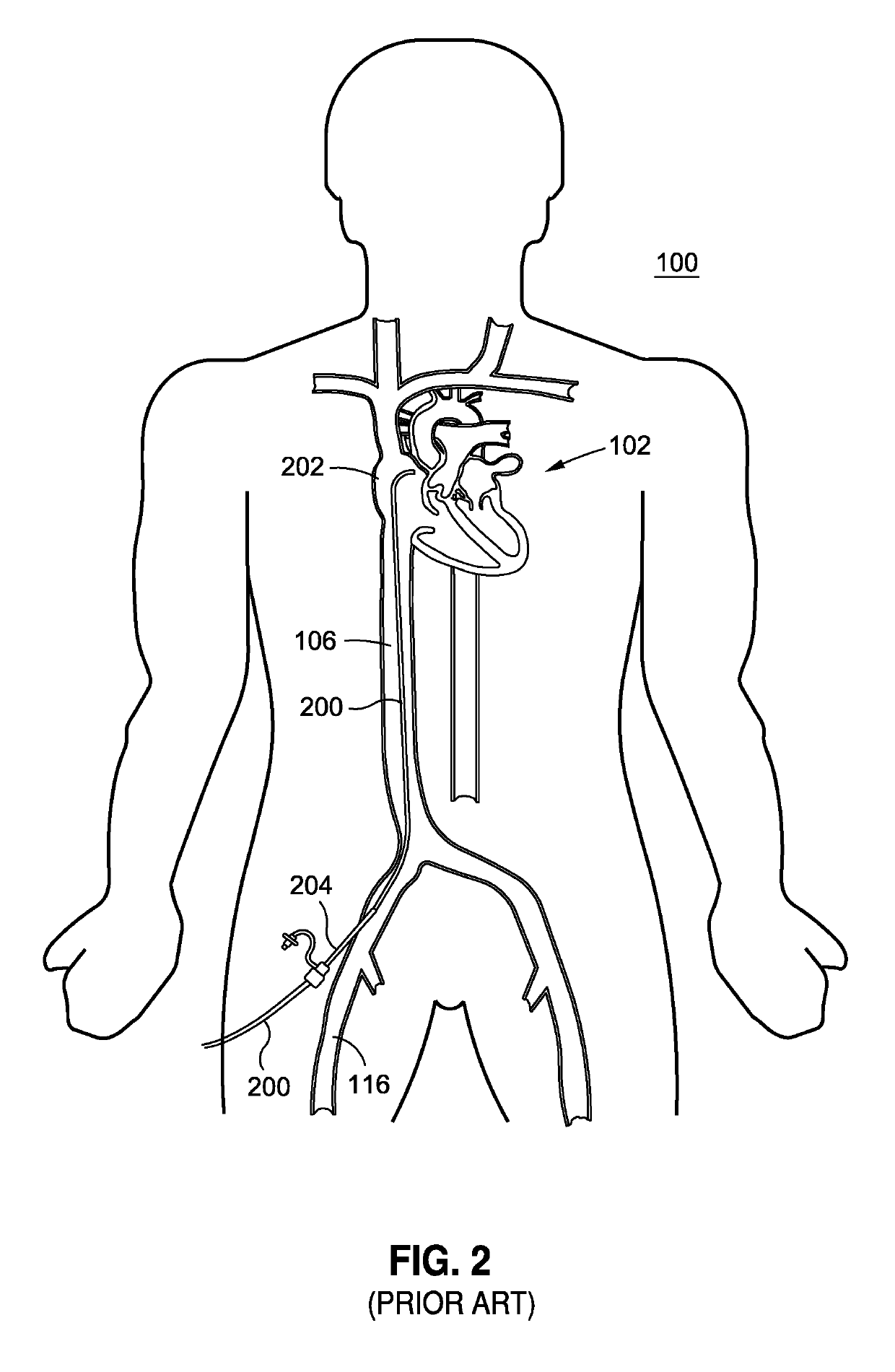System and method for implant delivery
a technology of implanting device and system, which is applied in the field of system and method of implanting device, can solve the problems of inability to position the implant in relation to the heart by rotating the proximal end of the catheter, and achieve the effect of reducing the number of joints and high degree of torsional rigidity
- Summary
- Abstract
- Description
- Claims
- Application Information
AI Technical Summary
Benefits of technology
Problems solved by technology
Method used
Image
Examples
Embodiment Construction
[0025]As may be understood from this detailed description, as read in conjunction with the figures, a catheter having features of the invention is described. The context of the invention is explained with initial reference to FIGS. 1-5.
[0026]Referring to FIG. 1, there is shown a schematic frontal illustration, looking posteriorly from the anterior side of the patient 100. The heart 102 is a pump, the outlet of which is the aorta, including the descending aorta 104, which is a primary artery in the systemic circulation. The circulatory system, which is connected to the heart 102 further comprises the return, or venous, circulation. The venous circulation comprises the superior vena cava 108 and the inferior vena cava 106. The right and left jugular veins, 110 and 112, respectively, and the subclavian vein 114 are smaller venous vessels with venous blood returning to the superior vena cava 108. The right and left femoral veins, 116 and 118 respectively, return blood from the legs to t...
PUM
 Login to View More
Login to View More Abstract
Description
Claims
Application Information
 Login to View More
Login to View More - R&D
- Intellectual Property
- Life Sciences
- Materials
- Tech Scout
- Unparalleled Data Quality
- Higher Quality Content
- 60% Fewer Hallucinations
Browse by: Latest US Patents, China's latest patents, Technical Efficacy Thesaurus, Application Domain, Technology Topic, Popular Technical Reports.
© 2025 PatSnap. All rights reserved.Legal|Privacy policy|Modern Slavery Act Transparency Statement|Sitemap|About US| Contact US: help@patsnap.com



